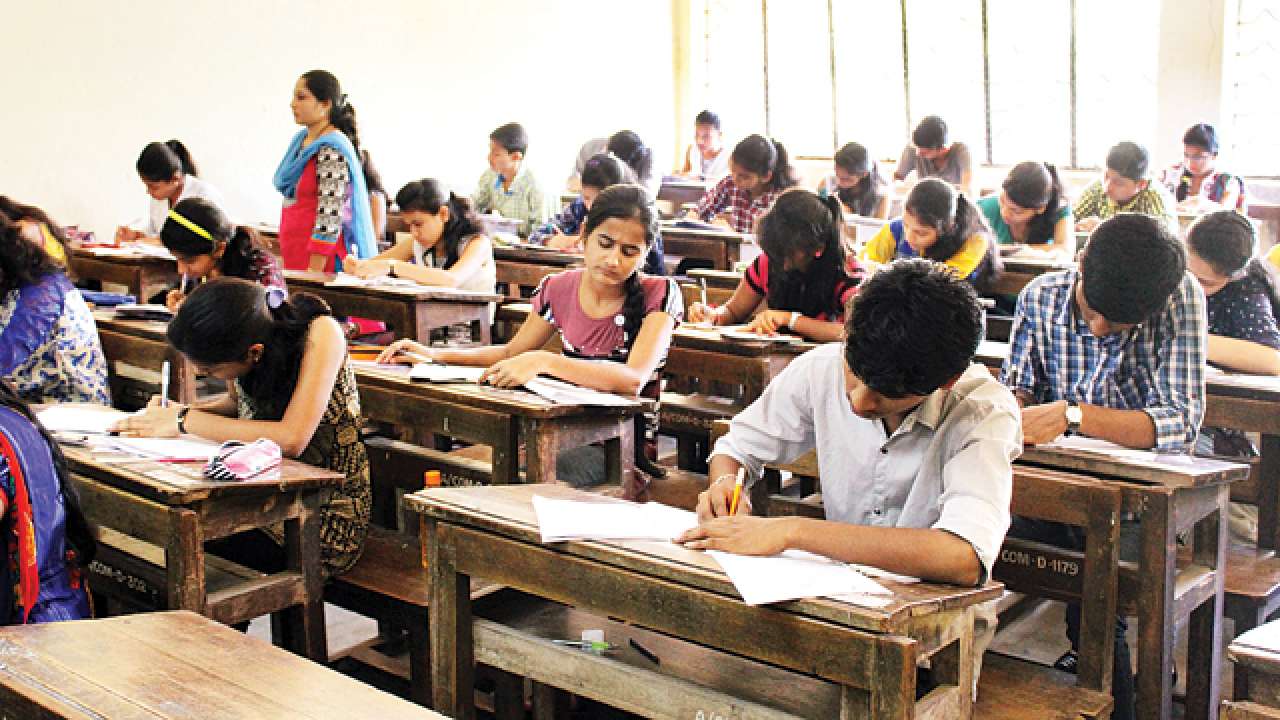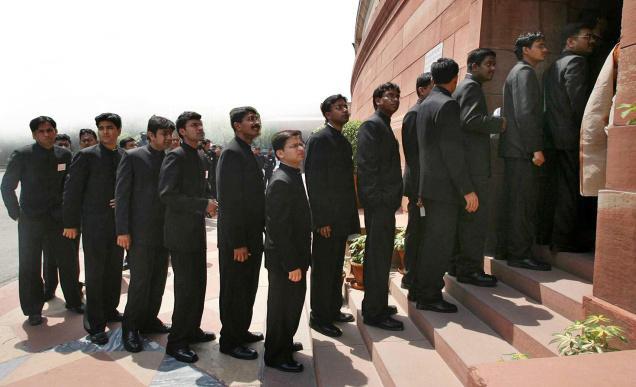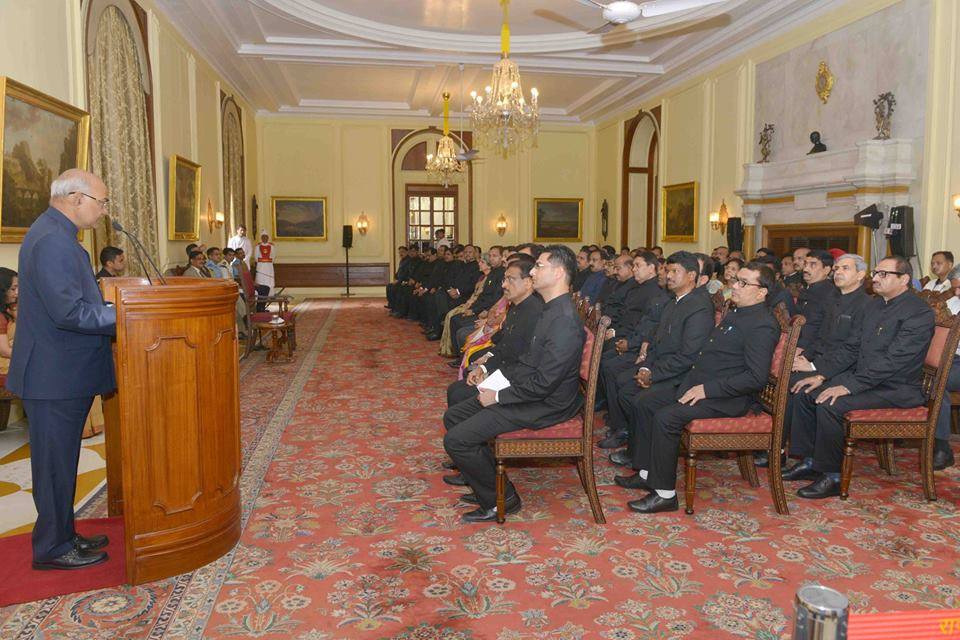Cap Civil Services Entry Age at 27 Years: 11 Critical Changes NITI Aayog Just Recommended
From lateral entry to protection from political pressure, here's everything you need to know about NITI Aayog's roadmap for the Indian Civil Services. #UPSC

Last month, the NITI Aayog, the Government of India’s leading think-tank, published a report titled “Strategy for New India @75.”
The report outlines their objectives for building a ‘New India’ by 2022 on the edifice of this country’s key economic drivers—infrastructure, agriculture, health, education and governance.
Amongst the multitude of objectives and recommendations listed in the 214-page report, is an entire chapter dedicated to how the government hopes to improve the functioning of the civil services, which is the bulwark of this country’s administrative structure.
The recommendations listed out are based on the Second Administrative Reforms Commission (ARC), which submitted around 15 reports on various aspects of governance from 2009.
Given below are some of the major recommendations that the NITI Aayog hopes the government will implement by 2022-23.
1) Reduce the upper age limit
The report suggests that the upper age limit for entry into the civil services, should be brought down to 27 years from the current 30, in a phased manner for general category candidates. The average age of recruits into the civil services is about 25.5 years of age. Moreover, this recommendation is aligned with the reality that 1/3 of India’s population is below 35 years of age.

2) Reduce the number of civil services and the number of exams to just one.
“The existing 60 plus separate civil services at the central and state level needs to be reduced through rationalisation and harmonisation of services. Recruits should be placed in a central talent pool, which would then allocate candidates by matching their competencies and the job description of the post,” said the report. Going a step further, the number of exams for civil services should be brought down to just one with an all India ranking. The centre could also encourage States to use this pool for recruitments.
3) Encouraging lateral entry
This issue has been a serious bone of contention between the civil service establishment and the government. Read this article in The Better India to know more about what some Indian Administrative Service (IAS) officers feel about this proposal.
Meanwhile, earlier this year, the government already took a few steps to this effect when they instituted lateral entry for the top position in critical ministries. Read more about it here.
4) Nurture specialisation
Following the government’s rationale that specialists need to inducted at the higher levels of the government, the NITI Aayog also recommends revamping the entire process of recruiting and postings based on specialisations.
“The key to reform in the civil services is encouraging officers to cultivate specialisations based on their education and skills early on in their careers. Wherever possible, longer tenure postings need to be made based on the officers’ expertise. However, it is also necessary to ensure cross-sector mobility for civil servants from areas where they have become surplus to areas of emerging importance,” says the report.

5) Introducing a system of mentorship
Once inducted, the NITI Aayog recommends that a young officer should be assigned a mentor who preferably possesses a similar set of skills or “functional specialisation.” Otherwise, the administration could send this officer to reputed non-profits “for vales and soft skill mentorship” for an initial period of time.
6) Establish a robust municipal corporation cadre
With more and more Indians moving into cities every year, the emphasis on urban governance is only going to grow. Thus, the NITI Aayog recommends increasing the staff numbers at these urban local bodies, monitor their performance along the lines of the other civil services, introduce online appraisals and biometric attendance.
However, these recommendations will only work if either Parliament of respective State governments introduce legislation increasing the powers of municipal corporations or urban local bodies and clearly delineate duties and responsibilities between them and other authorities like the State government and Centre.
Otherwise, these measures will do little to enhance urban governance. The objective must be greater decentralisation of powers.
7) Outsource service delivery
This is an interesting recommendation, and an attempt to lessen the load of service delivery on the state machinery.
“Research is needed to identify possible services to be outsourced; various PPP models should be explored to determine the best possible mode of outsourcing,” reads the report.
8) Introduce mid-career exams/skill assessment system to ascertain where an officer will be posted in the latter half of his/her career.
9) Compulsory retirement for underperforming officers: Establish transparent benchmarks, and retire officers if they do not meet them.
The devil here lies in the details. What benchmarks will they use?

10) Replace annual confidential reports (ACRs) with a multi-stakeholder feedback (MSF) online system.
“There is an inherent need to set key responsibility/focus areas and progressively reduce discretionary aspects to evaluate civil servants. Institute the online Smart Performance Appraisal Report Recording Online Window (SPARROW) template in all central and state cadres,” says the report.
11) Introduce more robust mechanisms for the protection of civil servants from political pressures and other vested interested. Before being suspended, officers must be afforded due process.
Once again, however, the devil here lies in the details. What mechanisms will they introduce?
By and large, these are all seemingly positive recommendations in tune with the changing nature of the Indian polity and economic realities. However, one isn’t sure about the key details that will entail these recommendations.
Let’s see what the future hold for the famed Indian civil services.
(Edited by Gayatri Mishra)
Like this story? Or have something to share? Write to us: [email protected], or connect with us on Facebook and Twitter.
If you found our stories insightful, informative, or even just enjoyable, we invite you to consider making a voluntary payment to support the work we do at The Better India. Your contribution helps us continue producing quality content that educates, inspires, and drives positive change.
Choose one of the payment options below for your contribution-
By paying for the stories you value, you directly contribute to sustaining our efforts focused on making a difference in the world. Together, let’s ensure that impactful stories continue to be told and shared, enriching lives and communities alike.
Thank you for your support. Here are some frequently asked questions you might find helpful to know why you are contributing?


This story made me
-
97
-
121
-
89
-
167











